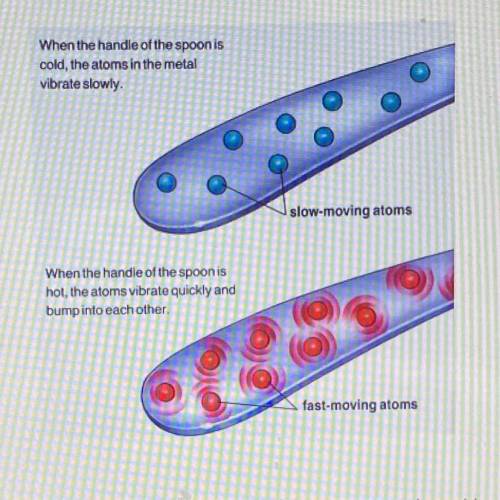
Biology, 06.10.2020 14:01 brianrodriguez2005
Prompt:
John was asked to create a model that showed the difference between conductors and insulators. The model he created is shown
below. Evaluate his models and his description of his model to determine if John shows the difference between a conductor and an
insulator. Describe what is good and what might be improved in his model.


Answers: 2


Another question on Biology

Biology, 22.06.2019 05:30
Identify the composition of oceanic and continental crystal rocks.in a model of earth’s interior,where would these rocks appear?
Answers: 2

Biology, 22.06.2019 15:00
Oak and maple trees, chipmunks, white-tail deer, and black bears emerging from hibernation are all organisms that may be found in which biome
Answers: 1

Biology, 22.06.2019 20:30
Our planet has experienced five major extinctions in the four billion year history of life. the first, 450 million years ago, occurred shortly after the evolution of the first land-based plants and 100 million years after the cambrian explosion. the second extinction occurred 350 million years ago, causing the formation of coal forests. next earth experienced two mass extinctions during the triassic period, between 250 and 200 million years ago. the fifth mass extinction occurred 65 million years ago, ending the reptilian dominance of the earth. according to richard leakey, the sixth mass extinction is happening right now. leakey suggests that we, the human race, are the cause. each year, at our hand, approximately 50,000 species vanish from earth. he believes that man is destroying earth at a rate comparable with the impact of a giant asteroid. leakey's statistics indicate that 50% of earth's species will become extinct within the next 100 years assuming leakey's hypothesis of a sixth mass extinction to be true, how will we expect the model to change? a) a sharp spike in the graph approximately 100 million years from now b) a dip in the graph, followed by a sharp spike about 100 million years from now c) a sharp spike in the graph immediately following the "0" location of the x axis d) a plateau following the "0" mark on the x axis, followed by a gradual rise to a new peak
Answers: 3

Biology, 22.06.2019 21:00
An adult inhales about 6.0×10−4 m3 of fresh air during a breath. only 20% of fresh air is oxygen. assume the pressure in the lungs is 1.0×105 paand the air is at a temperature of 300 k. how many oxygen molecules are in each breath? a. 1.4x10^23 b. 2.9x10^21 c. 4.9x10^-4 d. 2.9 x10^25
Answers: 2
You know the right answer?
Prompt:
John was asked to create a model that showed the difference between conductors and insulato...
Questions

Social Studies, 09.11.2020 17:30

Advanced Placement (AP), 09.11.2020 17:30

Mathematics, 09.11.2020 17:30


Arts, 09.11.2020 17:30

Mathematics, 09.11.2020 17:30


Mathematics, 09.11.2020 17:30

Biology, 09.11.2020 17:30





Computers and Technology, 09.11.2020 17:30


English, 09.11.2020 17:30

Mathematics, 09.11.2020 17:30

Mathematics, 09.11.2020 17:30

Mathematics, 09.11.2020 17:30



